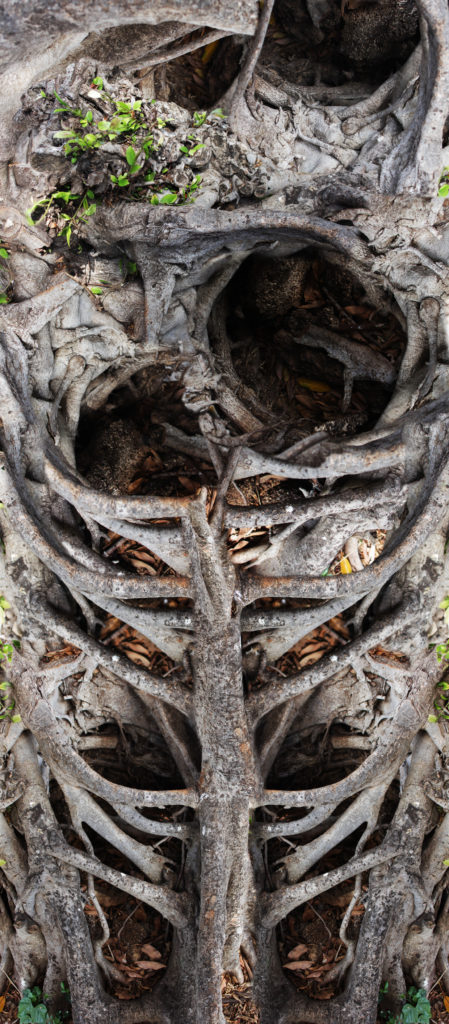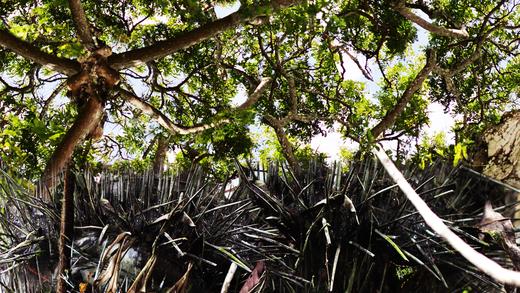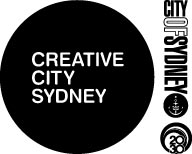Merri Randell
Merri Randell
 Merri Randell, Still from Touching the Mauri, 2018
Merri Randell, Still from Touching the Mauri, 2018
I am fascinated by the Māori concept of Mauri, the life-force within
all natural things. This work plunges into the void of my lost Māori identity
to retrieve my First Nations voice so that I may experience a sense of
peace and harmony through resonance with my unique soul note.
MERRI RANDELL
For Māori, all parts of the environment – animate and inanimate – are infused with mauri. Stones hold resonance, plants and animals are interconnected with people, and all express the mana, or cosmic power. In Randell’s ancestral forest, trees from Australia, Hawai’i, Peru and New Zealand are imbued with sentience. Their entanglement visualises the First Nations concept of folded time, where the past, present and future simultaneously co-exist. The healing energies – as frequency and vibrations – that pulse from roots to canopy are made audible by the sacred sonic Māori weaver Whaia Whaea.
The artist’s imaginings reveal a desire to know her ancestry, her family tree. Her childhood was influenced by Māori, Australian and Mormon the beliefs and rituals. Later she deepened her understandings of Indigenous and colonial histories. Randell’s creativity is currently overlaid with the philosophies of Julia Kristeva and theories of the psychologist Forrest Green. The latter promotes that every person has a unique vibration, frequency or soul signature. Through self-knowledge, an ability to listen and know, one resonates peace and power to invigorate a harmonious environment.
The Work
Touching the Mauri 2018
Single channel HD moving image, with sound
Duration 8:13 min, looped
Edition of 5
Courtesy of the Artist
About the Artist
Born on the Victorian wheatbelt, I’ve travelled, lived and worked all over the world. I share my small flood-prone farm in Logan, south-east Queensland with a menagerie of rescued animals / humans.
I’m a visual practitioner. I work with all kinds of visual media to communicate different meanings. In 2014, I completed a doctorate where I playfully explored Australian cinematic landscape myths to explore identity and my relationship with the land.
I celebrate diversity by creating worlds full of beautiful, hybrid monstrosities that seduce, beguile and disturb. These landscapes represent my experience of forests – vast in scale and detail, the same forms captured from different angles and perspectives – all shown at once – all connected. Through the addition of sound and motion these landscapes come alive and embody the typically hidden respiratory, digestive and reproductive compulsions of these places. This work playfully challenges colonial Australian cinematic myths which demonise our landscapes, such as ‘Picnic at Hanging Rock’ (Weir 1975) where the rock was accused of consuming the schoolgirls – rendering the landscape a crime scene and murderer.




